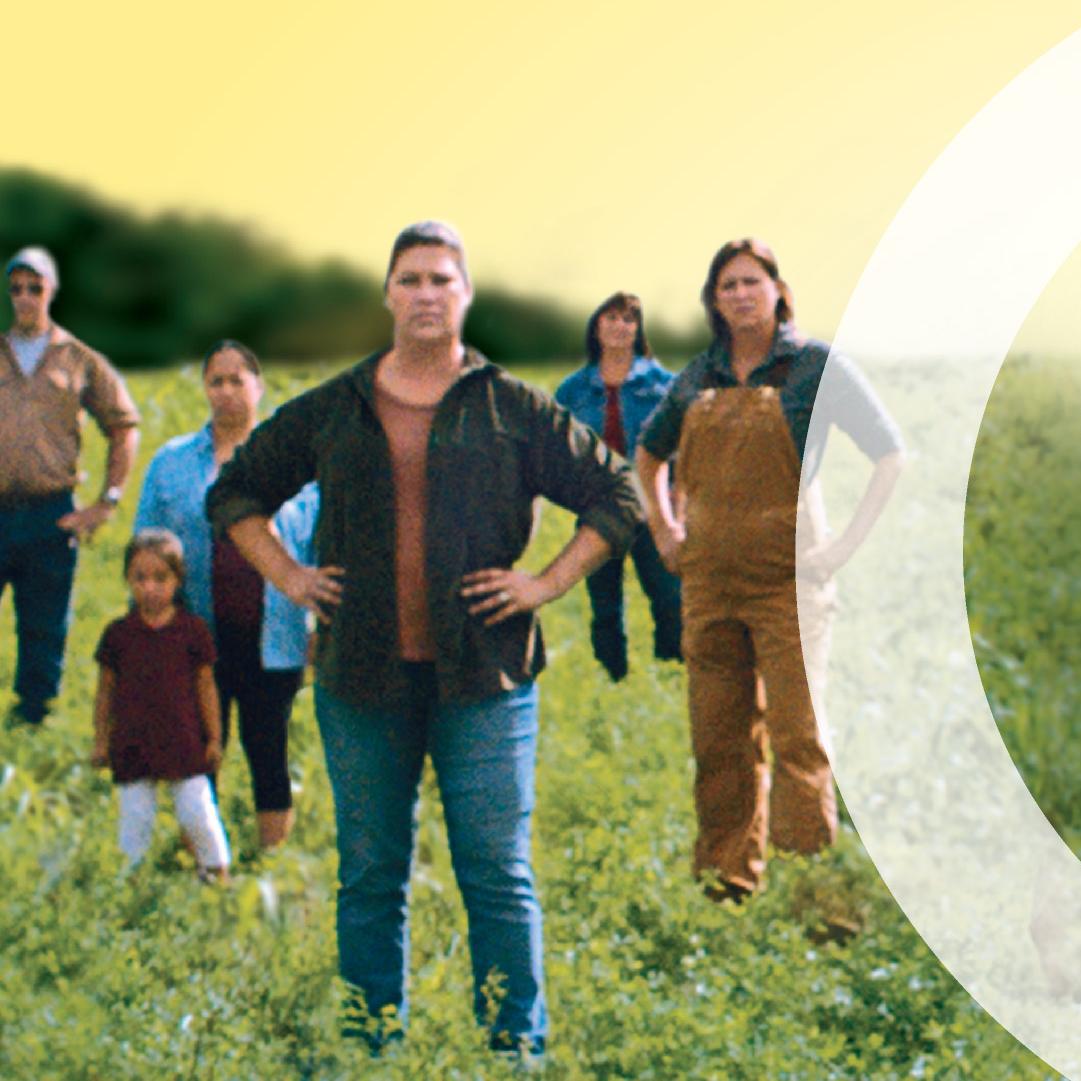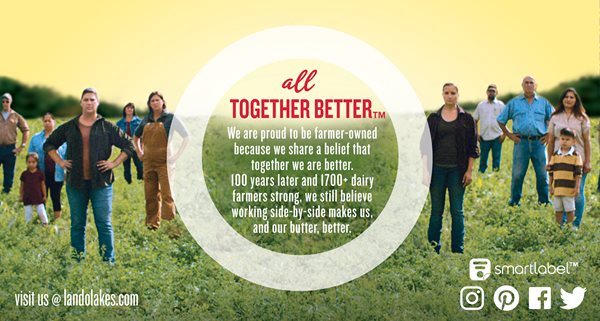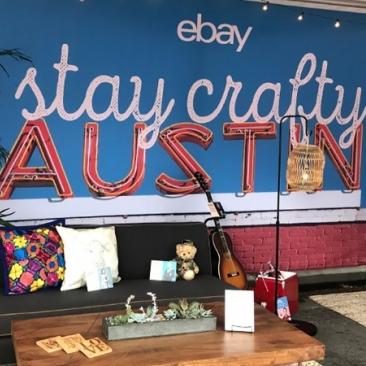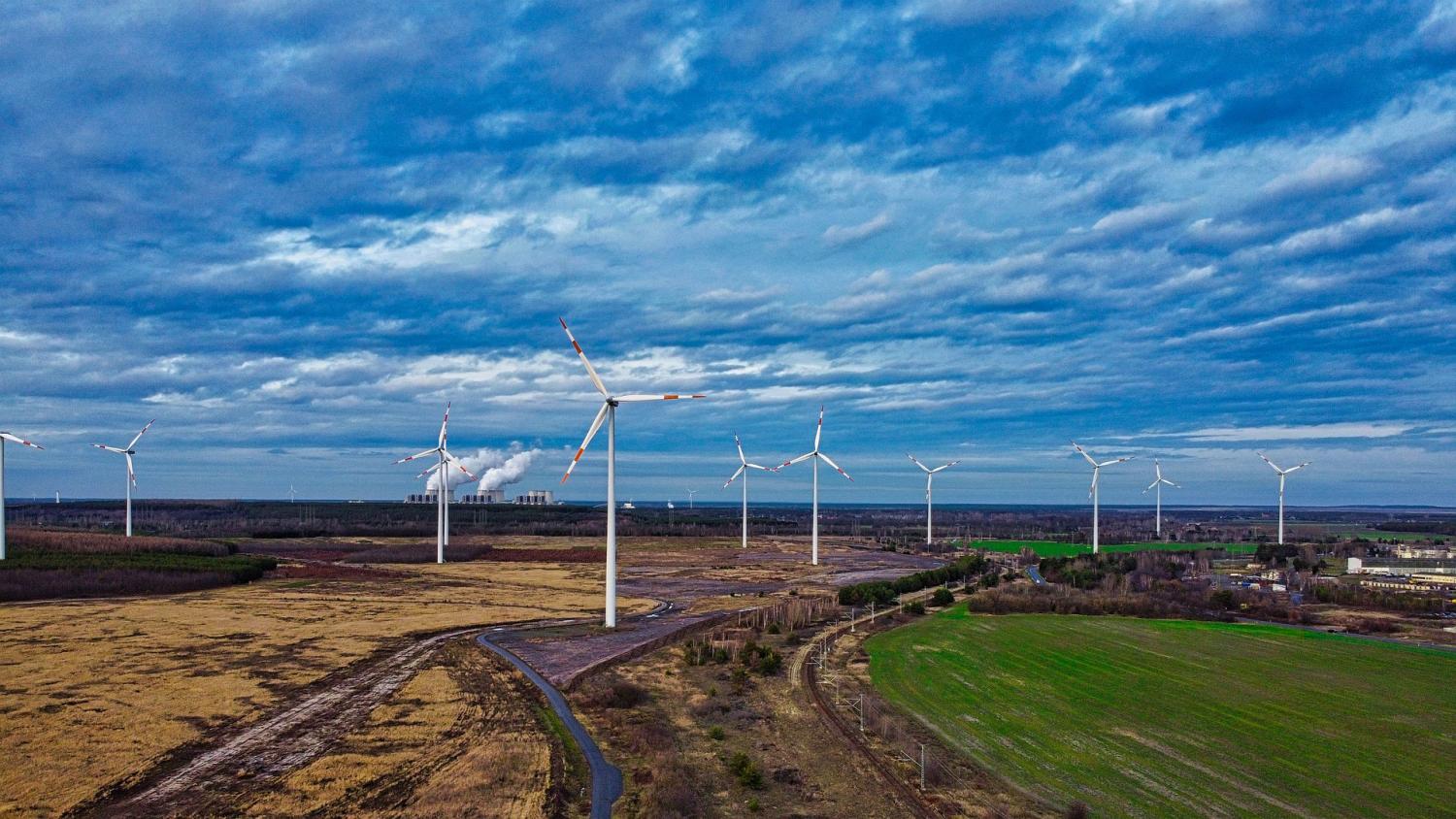What's Holding EVs Back: From Low Supply to Lack of Inclusion


Now that electric vehicles (EVs) are coming down in cost, forward-looking fleet managers are ready to make the switch. Unfortunately, that can be an exercise in frustration. Supply has yet to meet demand, and the bottleneck is especially acute in the U.S. Nevertheless, there are indications that fleet managers can start planning now for an all-electric future.
The electric vehicle chicken-and-egg
The electric vehicle market is still bedeviled by the chicken-and-egg conundrum. Automakers won’t manufacture EVs until they see demand, and drivers won’t demand something they can’t see.
Government mandates and incentives can get the ball rolling, but the U.S. is lagging far behind other nations in that area.
Still, signs of change are slowly beginning to emerge. The technology is improving, the nationwide EV charging station network is expanding, and drivers are becoming more aware of the convenience of charging up at home or at their workplace.
Pushing the envelope for EVs
The real problem is the pace of change. With the climate crisis already under way, accelerating the shift to electric vehicles is imperative.
To that end, international nonprofit The Climate Group has enlisted leading global companies to push demand by pledging to make electric vehicles “the new normal” by 2030 — just 10 years from now — under an initiative called EV100.
The impact goes beyond transitioning the fleets of member companies. The 67 corporate members of EV100 represent 3.4 million employees, who also form a potential market and can spread the EV message to family and friends.
In addition, many member companies are part of the automobile leasing market. For these members, fleet electrification is not counted by the hundreds. It translates into demand for tens of thousands of vehicles, and more.
For example, last week Lloyds Banking Group became one of EV100’s newest members, with a pledge to convert its 12,000 vehicles to EVs. That’s actually small change compared to the firm’s subsidiary, Lex Autolease, which committed to convert its fleet of approximately 350,000 customer vehicles.
Schneider Electric ups its commitment to EVs
Another newly announced EV100 member with a broad impact is Schneider Electric. The company has pledged to transition its own fleet of 14,000 vehicles. That’s a drop in the bucket compared to the potential ripple effect on other companies and individual car buyers.
Schneider Electric is in the energy management business, which puts it in a direct position to influence EV ownership far beyond its own fleet and employees.
The EV100 initiative has already networked Schneider Electric in with scores of other leading corporate members, and the company plans to leverage its membership in two other Climate Group initiatives, RE100 for renewable energy and EP100, which focuses on energy efficiency and productivity.
Diversity, meet EV policy
Schneider Electric also may have a secret weapon up its sleeve. The company earned a spot on Fortune’s 2019 list of Best Workplaces for Diversity. That focus on diversity could position the company to identify obstacles and opportunities for EV ownership among different demographic groups.
Diversity is especially important in a market like the U.S. So far, Tesla is leading the U.S. in electric vehicle sales, but its focus on the luxury market has skewed its customer base heavily toward older, higher-income white men.
As impressive as the EV100 collaboration is, individual car buyers can still make or break the pace of the EV transition. Global EV sales slumped slightly last year even though other, non-Tesla automakers introduced dozens of new models, indicating that the attraction of electric mobility hasn’t caught hold yet.
With a global economic slowdown looming, the prospects for a significant bounce in sales this year are fading.
Nevertheless, policies could fill in the gap with mandates and incentives. White House policymakers have been working to relax national fuel efficiency and emissions standards. But the Department of Energy sent a strong signal in the opposite direction last month with significant new funding for initiatives that could help accelerate the EV transition.
Along with a full slate of R&D programs for electric vehicles and related technology, the Energy Department is making the case for affordable EV ownership, partly by raising awareness about the impact of fuel costs on household budgets.
The fresh burst of activity may also vindicate General Motors. The company earned a torrent of criticism from EV advocates last fall when it joined several other auto manufacturers in challenging California’s bar-setting status on fuel efficiency and vehicle emissions.
GM argues that it supports a 100 percent EV future through national policy rather than a state-by-state piecemeal approach.
Between the EV100 fleet commitments, new EV commitments by UPS and other non-EV100 owners, plus recent Energy Department activity, the prospects for a rapid EV transition in the U.S. look brighter than ever.
Image credit: Nissan USA
Tech Companies Dominate the Largest U.S. Renewable Energy Buyers of 2019


The Renewable Energy Buyers Alliance, a membership association for large-scale energy buyers focused on procuring renewables, recently released its Deal Tracker. The report names the top renewable energy buyers for 2019, totaling 9.33 gigawatts of renewable energy bought in the U.S. For reference, the U.S. is expected to add 9.3 GW of natural gas generating capacity in 2020.
Silicon Valley dominates the list of largest procurers of renewables
The top five spots on the tracker are all taken by technology companies, with Facebook landing at No. 1, followed by Google. This is no surprise, as technology companies require energy-intensive data centers to make their operations possible. As the tech sector grows, pressure to increase the efficiency of the data centers is building, and the next step is purchasing more renewable energy to power them.
The listed tech companies all have significant sustainability plans, but an investment in renewable energy, in particular, can help address another underlying issue: Without renewables that have a low impact on water supplies, such as wind and solar photovoltaics, any energy used is generated by fossil fuel- or nuclear-powered electricity, which are incredibly water-intensive. Many of these massive data centers are located in water-stressed areas like California and Texas and every state in between. Considering how energy has a high demand on water supplies, these investments in technologies such as wind and solar power are good long-term business strategies.
America’s largest buyers of renewables include some surprises
Some interesting companies made an appearance in the second half of the tracker. McDonald’s shows up for the first time, and Honda beats out Ford, which comes in at No. 17.
With transportation being the top contributor to greenhouse gas emissions in the U.S., Honda has emerged as an industry leader in this space. While most attention is focused on the growing electric vehicle space, there are still plenty of internal combustion engine cars on the road, and Honda’s place on this tracker and other sustainability lists will hopefully push other automakers to improve their efforts to deploy renewables as well.
The entry of McDonald’s into the renewable energy space is relatively recent: 2019 marked its first major purchase as part of a larger effort to reduce emissions throughout the value chain as part of its commitment to the Science-Based Targets initiative. The company set a target in line with a 2 degrees Celsius reduction, pledging to cut GHGs by 36 in restaurants and offices and 31 percent in the supply chain by the end of this year, compared to a 2015 baseline. It is the first restaurant chain to make such a bold pledge. And considering its target was set in 2018, coming in at No. 9 in the tracker is a significant accomplishment for McDonald’s.
To the average consumer, it may make sense for big technology companies to be on board with renewables. But that same consumer may not consider that fast-food or car companies would need to do the same. These sectors do not have as straight a shot to emissions reductions as data centers, with their high energy demand. Restaurant chains have to consider upstream and downstream factors, including ingredients such as beef, in addition to all that packaging and the effects of their restaurant operations. Meanwhile, auto manufacturers not only have to consider the energy demands of their manufacturing and dealers, but also the carbon and water footprint of all the materials needed to build a car.
Companies should be vying to beat each other to the top of the renewable energy lists and trackers, but sustainability is a multi-faceted issue. A leader from one industry should encourage others to follow suit. In an opt-in business culture, more examples of bold climate action like the ones mentioned by the Renewable Energy Buyers Alliance are needed.
Image credit: Unsplash
Land O’Lakes Redesigns Packaging to Showcase Stories About Dairy Farmers


There is often a disconnect between farmers and consumers. Farmer-owned Land O’Lakes is looking to connect the two with newly redesigned packaging that highlights the cooperative’s various farmers.
The new packaging features “farmer-owned” above the brand name. Some packs also include photos of Land O’Lakes farmers and co-op members, emblazoned with the words, “Proud to be Farmer-Owned: As a farmer-owned co-op, we stand together to bring you the very best in dairy."
The new packaging has already begun to appear on tub butter spreads, foodservice products and deli cheese. It will be used for stock butter later this year, and by the end of 2020, it will be fully rolled out across the company’s products — just in time, as the cooperative hits the century anniversary mark in 2021.
“As Land O’Lakes looks toward our 100th anniversary, we’ve recognized we need packaging that reflects the foundation and heart of our company culture — and nothing does that better than our farmer-owners whose milk is used to produce Land O’Lakes’ dairy products,” Beth Ford, president and CEO of Land O’Lakes, said in a statement.

Land O’Lakes links consumers with farmers and tells women farmers' stories, which are often overlooked
Minnesota-based Land O'Lakes says it wants to shine a spotlight on dairy farmers, all of whom contribute to its $15 billion in annual sales, and the new packaging is part of a series of campaigns featuring farmers.
Just a month after Beth Ford took the helm of the company as its new CEO, Land O’Lakes launched the “All Together Better” campaign that in part paid homage to women dairy farmers. The campaign began with a music video of a reimagined version of “Old MacDonald Had a Farm” called “SHE-I-O.” The music video featured Land O’Lakes member farms in Pennsylvania.
Thirty percent of all U.S. farmers are women, and the Old MacDonald remake is just one way Land O’Lakes is telling their stories. The brand's On Her Farm campaign features four videos of women farmers who are Land O’Lakes members.
Each video is only about seven to nine minutes long. One features the Rancho Teresita Dairy farm in Tulare, California. In the video, third-generation dairy farmer Allison Kasbergan gives chef and culinary farmer Courtney Guerra a tour of the dairy. The message to consumers is clear from both the On Her Farm tour and the "SHE-I-O" video: Men are not the only ones who farm.

(Image: The back panel of Land O'Lakes' new packaging.)
Bridging the gap between grocery shoppers and farmers
Land O’Lakes’ effort to highlight the work of its farmers comes at a time when the number of Americans who work on farms is incredibly low. While there are 2.05 million farms operating, farming jobs comprise only 1.3 percent of employment in the U.S.
This small number notwithstanding, most people have a favorable view of farmers, research shows: A 2016 poll of 1,000 registered voters found that nearly 90 percent had favorable opinions of farmers. However, while Americans view the agricultural sector favorably, most have little knowledge of farming. One 2019 poll revealed that 72 percent of respondents know little to nothing about farming or ranching, though 69 percent think about food production at least somewhat often.
Perhaps what consumers need is a face to put to the farming industry to feel more connected. To that end, Land O’Lakes’ campaigns offer a face and identity of the farming industry. So back to those updated labels: Highlighting that the company is a farmer-owned cooperative is a smart move.
Consumers are excited to learn that Land O’Lakes is farmer-owned, said Heather Anfang, a senior vice president at the company. “We're eager to share that message with shoppers, and extending that farmer-owned story to our packaging is arguably our most direct vehicle to communicate with consumers,” Anfang said.
Image credits: Land O’Lakes Newsroom and Marino Bobetic/Unsplash
Despite Political Polarization, There’s a Business Case for Reproductive Health


A groundbreaking report outlines the business case for reproductive health. Rhia Ventures, a social impact investment firm focused on innovative solutions in reproductive health, published the report partnership with FSG, a social impact consulting firm.
The report, entitled Hidden Value: The Business Case for Reproductive Health, suggests five business drivers for providing comprehensive reproductive healthcare benefits in the workplace.
This report is informed by interviews and input from 39 companies across various industries. The roster of companies includes 24 Fortune 500s that together employ nearly 4.5 million people and operate across all 50 U.S. states. The authors of the report also engaged more than 50 experts in human resources, reproductive health, and insurance to understand how U.S. businesses currently approach and implement reproductive health policies.
The release of the Hidden Value report comes at a critical time when many believe that women’s reproductive rights are under attack.
Reproductive healthcare has become polarizing. Many pro-choice activists and supporters believe that reproductive healthcare, in all its forms, is a human right. Many pro-life activists, on the other hand, believe that access to reproductive healthcare — specifically abortion— should be outlawed. While this issue was once something that the business community shied away from, the CEO-led Business Roundtable's recently updated statement on “the purpose of a corporation” confirms that times are changing, and we should expect new standards for corporate leadership.
Restrictions state-by-state
Between 2011 and 2019, 482 abortion restrictions were enacted at the state level, with 58 abortion restrictions being passed in 2019 alone, according to the report. Some of the most visible 2019 bills were enacted in Georgia, Alabama, Kentucky, Louisiana, Mississippi, Missouri and Ohio.
From the perspective of employees, 6 in 10 (61 percent) of women would be discouraged from taking a job in a state that has tried to restrict access to abortion, according to Hidden Value surveys. In addition, 54 percent of men aged 18 to 44 say they would also be discouraged from taking a job in a state that has recently tried to restrict abortion access.
This poses a problem for companies looking to attract top talent but located in states with restrictive reproductive health policies. In the case of Georgia, where the bill was blocked from going into effect this year, a number of media companies have vowed to stop production in the state if the bill goes into effect.
Shelley Alpern of Rhia Ventures shed some light on gathering information for the report:
“The companies that we’re talking to are largely self-insured companies that can really dictate the terms of their [health] insurance coverage and don’t have to abide by all of the state restrictions around insurance. They can go beyond the requirements of the Affordable Care Act and make sure that all forms of birth control are covered; they can also make sure that abortion is covered without restrictions.”
A link to reproductive health and business
Hidden Value is quite timely given the uptick in recent conversations around reproductive healthcare in the workplace. In June of 2019, top executives from more than 100 companies signed a full-page ad featured in The New York Times criticizing recent abortion restrictions.
Under the umbrella of “Don’t Ban Equality,” leading brands across industries collectively stated: “Restricting access to comprehensive reproductive care, including abortion, threatens the health, independence and economic stability of our employees and customers. Simply put, it goes against our values and is bad for business.”
While reproductive health activists have long worked to highlight the link between reproductive health and business, data to support the conversation hasn’t been readily available on a wide scale. Rhia Ventures hopes to change that with Hidden Value.
The CEO and co-founder of Rhia Ventures, Lisa Hammann, describes the report as “a toolkit disguised as research.” Broken into five business drivers and two call-to-action statements, Rhia Ventures claims that executives and HR leaders can use this report as a guide for immediate action to raise questions about reproductive health in their own companies. Alpern adds that the report “can really be used for companies who are considering how they can close gaps and how they can audit their own internal policies.”
While women’s healthcare continues to play out in courtrooms across the country, Hidden Values shows us that when it comes to the business sector, the benefits of supporting reproductive health are vast. Companies that focus on and offer reproductive healthcare attract top talent, retain existing talent, provide high-impact benefits at a relatively low cost, promote diversity and inclusion, and create forward-thinking cultures.
“Investing in comprehensive healthcare access, including reproductive healthcare, is something companies cannot afford to overlook," Hammann said. "Providing these benefits maximizes the talent pool, helps attract and retain workers, builds diverse talent pipelines, and can yield significant cost savings when employees have control over when and if they become pregnant. Ultimately, this investment has a positive impact on a company’s bottom line.”
Image credit: Pixabay
Your Future Coffee Sweetener Could Come from Food Waste


Food waste adds to the world’s greenhouse gas emissions because rotting waste gives off methane, a greenhouse gas 84 times more potent than carbon dioxide. One company has an innovative solution: It takes food waste and turns it into a natural sweetener.
There is much to appreciate about Fooditive. Founded in 2018 by a Jordanian food scientist, Moayad Abushokhedim, Fooditive buys the apples and pears that farmers can't sell due to flaws and uses them to create a sugar substitute. The company aims to achieve zero production waste by composting the scraps it can't use.
The sweetener is compliant with the European Union's organic standards and was awarded the Skal certification, which means Fooditive can produce an organic sweetener in addition to the regular one. And both may soon appear on store shelves.
Fooditive is working with Bodec, which it describes as a sustainable third-party production company, to get its products into Dutch supermarkets. It will also be distributed to various food and beverage companies across the Netherlands later this year, according to the company.
Fooditive's circular idea attracts attention
Fooditive's mission is to "develop food additives that contribute to a healthy body and a healthy environment,” founder Moayad Abushokhedim wrote in a statement on the company's website, and its idea to turn waste into resource is beginning to attract attention.
Dutch banking giant Rabobank awarded the company its Innovation Loan last year. What Fooditive is doing fits in with Rabobank’s program called Banking for Food, Wiel Hopmans, small and medium-sized enterprise account manager at Rabobank Rotterdam said in a statement. By turning apple and pear leftovers into a sweetener, Fooditive not only reduces food waste, but also “contributes to the European food industry by offering healthy alternatives to chemical sweeteners,” Hopmans said.
Fooditive also partners with Rotterdam Circular, an organization out to transition Rotterdam's economy from linear to circular by 2030.
More companies are churning food waste into edible products
Fooditive isn't the only company turning food waste into edible products. ReGrained takes the byproducts of beer, which include protein and fiber, and makes a flour dubbed SuperGrain+ which is used to make snack bars and puffs. A six-pack of beer produces one pound of sugar-extracted barley which is turned into SuperGrain+. To date, the company has upcycled over 190,000 pounds of grain.
Pulp Pantry takes fresh vegetable juice pulp, a byproduct of juice manufacturing, and turns it into edible products including cereals and chips. What the company does not only reduces food waste, but water use as well: Every pound of pulp the company uses keeps 38 gallons of water from being wasted.
Around a third of bread is wasted in the U.S. Toast Ale reclaims leftover bread from bakeries and turns it into lager and pale ales. All of its profits are given to Feedback, an organization working to end food waste. A British company, Toast Ale also makes beer in New York City.
Such efforts are greatly needed. About a third of all the food produced annually for human consumption, approximately 1.3 billion tons globally, is either lost or wasted. Food that is lost or wasted adds up to around $680 billion in industrialized countries and $310 billion in developing countries. Fruits, vegetables, and root crops are some of the most wasted foods, accounting for 40 to 50 percent of all food waste, while cereals account for 30 percent.
Image credit: Pixabay
Australia Bushfires Should Sound Alarms to the Global Business Community, says WWF Leader


The staggering human and environmental toll of the latest Australia bushfires continues to rise, and peak fire season hasn’t even arrived yet for some parts of the country. Efforts have rightly focused on providing immediate assistance to communities impacted by the fires, but eventually leaders will also have to contend with the huge economic cost of this disaster—and what it could mean for the future of both Australia and the world at large.
The damage from Australia’s fires, so large now that they have generated their own weather systems, is likely to exceed the US$3 billion record set by their devastating “Black Saturday” fires in 2009. Analysts have revised down the nation’s economic growth forecast due to the disaster. To justify their more pessimistic outlook, they cite not just the cost of recovery and rebuilding, but also the harm to key sectors like agriculture, tourism and construction, a dip in consumer confidence, and the health and productivity costs incurred by widespread air pollution.
Australia bushfires a signal that environmental disasters are now the norm
It’s not hard to imagine a day in the not-too-distant future when such disasters are the norm. This month, the World Economic Forum (WEF) provided a glimpse into this future with its annual Global Risks Report. As identified by the report respondents, the five most likely risks over the next decade are all connected to environmental degradation. This is the first time a single issue has dominated the top five spots in the report’s 14-year history—a grim milestone that should send shockwaves through the global business community.
The writing is on the wall. Last April, in an open letter on climate-related financial risks, the heads of the Bank of England and the Bank of France concluded that “companies and industries [that] fail to adjust to this new world…will fail to exist.” On January 14, BlackRock CEO Larry Fink wrote in his letter to clients that “climate change has become a defining factor in companies’ long-term prospects.” A few days later, a report by the McKinsey Global Institute echoed that assertion, projecting that "climate change could put hundreds of millions of lives, trillions of dollars of economic activity, and the world's physical and natural capital at risk.”
That term “natural capital” is key to understanding the immense challenge we face. Natural capital refers to the clean water, fertile soil, wildlife and other natural resources that sustain human civilization itself as well as global commerce. The total value of the benefits that nature provides to people—from food and fuel to medicine, crop pollination, carbon sequestration, disaster protection and more—exceeds US$125 trillion annually.
In the past, Earth has been able replenish these “natural assets.” Fish repopulate. Forests regrow. But humanity is now consuming energy and resources faster than the planet can regenerate them. We are effectively borrowing natural capital from future generations. In point of fact, “stealing’ may be the more appropriate word for it, because some of Earth’s bounty, once lost, is likely gone forever.
Indeed, the tragedy unfolding in Australia—over 1 billion animals killed and millions of acres of forest incinerated—is an acute manifestation of a much larger problem. Around the world, one in four species now face extinction. Ocean temperatures and acidity levels are rising. Shifting weather patterns raise the specter of food and water insecurity. All of these disruptive changes put supply chains, infrastructure and investments at risk, effectively placing companies at the forefront of this crisis. As a result, companies that still want to be in business 50 years from now need to ask themselves two questions. How can they help to mitigate further damage to nature? And how can they adapt to the changes already baked into our future?
Time for the global business community to step up
The answers to these two questions are inextricably linked, because nature is not just a source of goods and services, it’s also our first line of defense against extreme weather events and other climate impacts. Even as companies learn to do more with less—by reducing their emissions and adopting more sustainable approaches to production and waste management—they must also make nature-based solutions an integral part of their efforts to build resilience in a new era of constant change and disruption. To return to the example of Australia, companies that do business there have an opportunity to help communities rebuild the right way. That means shifting production and infrastructure away from high risk areas, transitioning to renewables, and restoring destroyed and degraded landscapes with more resilient plant species. It also means removing invasive species that crowd out the native species and can actually increase the likelihood of fires.
Companies can also leverage their considerable influence to urge governments and consumers toward better environmental stewardship. At COP 25 in Madrid last month, we saw world leaders fail to reach a consensus for global climate action. But we also saw many others—states, cities, tribes and businesses—eager to adopt ambitious goals and implement concrete plans to achieve them. These leaders are the vanguard of the 21st century climate movement, and more join their ranks every day.
As we enter a new year, and a new decade, companies must resolve to make business-as-usual a thing of the past. The latest Australia bushfires can herald a future of more chaos and calamity, or it can be the impetus for companies, communities and nations to choose a better path.
S.A. Country Fire Service/Facebook
Denny’s is the Latest Chain to Sell Beyond Burger Nationwide


To customers at chains like A&W and TGI Friday's, the plant-based Beyond Burger goes toe-to-toe with the real thing. Now, it's time for Denny's diners to give it a try. Served with lettuce, American cheese, pickles, tomato and onion on a multi-grain bun, Denny's Beyond Burger option presented customers in Southern California a timeless classic with a 21st-century twist.
A trial run of serving the plant-based burger in the Los Angeles area was “overwhelmingly successful,” according to the company. And as of this month, the diner chain will offer the alternative meat option at more than 1,700 locations in the U.S. and Canada.
Below we outline three major takeaways from Denny’s bet on Beyond Meat.
There’s still plenty of room on the plant-based bandwagon
Denny’s says it added the Beyond Burger to meet changing consumer preferences — namely, their continued interest in trying out a flexitarian diet. Denny’s Beyond Burger contains no GMOs, gluten or cholesterol and less fat than regular beef burgers. It also has more protein than ground beef. Customers only have to nix the American cheese and burger sauce for a vegan meal (in concept, unless the burgers are cooked on the same grill with meat products). Hence Denny’s is showing that it’s open to preferences that millennials and Gen Z consumers have been expressing to food companies.
Younger consumers are concerned about more than just nutrition. The environment weighs heavily on the minds of many Millennials, and Beyond Meat believes it’s up to the challenge. According to the company, Beyond Meat uses 99 percent less water, 93 percent less land, 46 percent less energy, and releases 90 percent fewer greenhouse gas emissions. Plus, the Beyond Burger is free of any completely animal protein.
While Denny’s menu has long relied on tried-and-true diner staples, adding Beyond Burger to the menu gave the casual dining chain the opportunity to bring in new customers in an era challenging to many food and restaurant companies due to evolving consumer tastes.
The partnership with Beyond came on the heels of McDonald’s announcing it would be expanding its vegan burger availability to Canada, which are also made with Beyond. Dunkin’, KFC (Beyond Fried Chicken), Del Taco and more fast food chains have also started partnering with Beyond Meat while competitors Burger King and Little Caesars are working with Impossible Foods to add plant-based options to their menus.
Got competitors? Go ahead, take a risk on the Beyond Burger
Denny’s launch of Beyond Burger came at a time when family-style, middle-of-the-road restaurants like IHOP and Applebee’s are struggling to beat out competition from fast-casual chains. Hence the new plant-based burger option is a way for Denny’s to lure diners at a time when they have been increasingly turning to popular fast chains like Panera or Chipotle.
Denny’s decision to test Beyond Burger in L.A. first was an interesting strategic choice. True, the second largest city in the U.S. has a reputation for “healthy” living and cuisine. But L.A. traces its roots to the Midwest, where the cattle industry has long reigned supreme -- and the city’s passion for burgers is one of its intangible landmarks. Let me clarify -- real, meat burgers. CNN Travel, for example, ranked L.A. as the top 10 meat lover’s state in the U.S.
Was Denny’s running on a gamble that if a plant-based burger could survive and thrive in L.A., it could be successful almost anywhere? Denny’s sure thinks so, having enough confidence in future sales of the Beyond Burger that it would add it to the menu at all of its locations across North America.
Choose a supplier that is established and can meet demand
Since the company first landed its products at Whole Foods in 2012, the company has emerged as a strong, reputable brand. Just look at the company’s sales: last year, Beyond brought in $42 million, which is more than three times the revenue the company made in 2018. Beyond is also one of the biggest names in the plant-based food industry, selling its products in about 30,000 grocery stores in multiple countries.
In 2018 revenues for Denny’s reached $2.9 billion, and for the most part its stock has been on an upward trajectory over the past decade. But the restaurant industry is facing challenges at all sides, from the proliferation of online delivery apps, convenience stores and to even ghost kitchens. Trying out plant-based options is one way in which companies like Denny’s can be proactive and stay viable in the long term.
Image credit: Denny’s and Beyond Meat
eBay is Expanding the Reach of Austin Small Businesses through Retail Revival


Austin is a city filled with boundless creativity. Its rich community of artisans, musicians and innovators have created a distinct, dynamic local culture and put this Texas town on the world’s stage. Austin is also home to hundreds of eBay employees, who are passionate about their city and the small businesses that make it so unique. Today, we’re deepening our longstanding investment in Austin, with the local launch of Retail Revival, our acclaimed small business support program, here in the capital city.
Launched in 2018, Retail Revival empowers independent retailers to “stay local, sell global,” thereby keeping their retail communities intact and thriving. It provides participating small business owners with the in-depth training, tools and promotional support they need to start and grow on eBay.
Our newest Retail Revival cohort in Austin includes approximately 50 sellers, whose products span across a range of categories, from ceramics to electric bicycles, sustainable fashion and even gourmet cotton candy. They join our global family of Retail Revival sellers who have now opened their digital storefronts on eBay and are continuously reaching hundreds of thousands of new customers around the world.
“With this month’s Retail Revival Austin launch, we’re celebrating independent local businesses and the vibrant individuality they bring both to their city and our marketplace,” said Marni Levine, vice president of seller operations and engagement. “We’re excited to super-charge their efforts through Retail Revival, helping them expand their businesses globally while staying local.”
At today’s Austin launch event, our newest Retail Revival sellers joined our eBay employees for a full day of networking, trainings and interactive sessions to learn best practices in excelling on the eBay platform.
eBay has enjoyed a strong presence in Austin since our office was established there in 2007. Retail Revival Austin is a natural expansion of our Austin office’s commitment to community impact — in the last five years, our Austin employees have logged roughly 5,000 volunteer hours in the community.
“Austin is a flourishing tech and business hub that has seen tremendous growth within the last few years,” said Mike Petersen, head of the eBay Austin office. “Many eBay employees call Austin home; we’re eager to do our part in helping our local small business owners thrive on our global platform through Retail Revival.”
eBay harnesses the power of technology to empower independent small businesses by equipping them with the skills and tools to engage in commerce on a global scale. In Texas, 95 percent of eBay-enabled small businesses export, compared to 1.5 percent of traditional businesses, reaching customers in 16 markets around the world to date. Our hope is that Retail Revival will expose Austin’s one-of-a-kind inventory to our worldwide audience, giving our buyers unparalleled choice.
The Retail Revival program is core to our mission at eBay: to empower our sellers and create sustainable economic opportunity. The Austin expansion follows successful Retail Revival program launches in Akron, Ohio; Lansing, Michigan; Greensboro, North Carolina; and Baton Rouge, Louisiana, as well as international programs in six cities around the world, including Wolverhampton, UK, and Halifax, Canada.
To date, more than 400 participating businesses in the program have generated over $20 million in GMV, and sold to buyers in nearly 170 countries.
Shop small businesses on eBay: While our Austin sellers work to get their inventory listed on eBay, explore the incredible selection of products from other Retail Revival sellers at ebay.com/retailrevival.
Previously published on the 3BL Media Newsroom.
Image credits: eBay/3BL Media News; Pixabay
How Bacardi and Mercy Corps Help Caribbean Businesses like Kaffeina Recover


Small businesses are at the heart any community and their success feeds into the economic development of their neighborhood. That’s why, more than two years after the devastating hurricane season that included Hurricanes Maria and Irma, Bacardi and Mercy Corp continue to support the recovery of small and medium-sized businesses in the Caribbean. Among them is Kaffeina, a small bistro with European Caribbean influences located in Toa Baja, Puerto Rico.
Just one year after eighteen-year veteran of culinary industry King Rodríguez Villegas proudly opened the doors of Kaffeina, he was forced to close as a result of the hurricanes. While his bistro didn’t suffer structural damage, King was still forced close his doors for three months as a result of lack of utilities and unreliable electricity. According to King, the hurricanes were devastating for the local economy and hit just as the culinary “industry was taking a new shift, it was growing, an avant-garde movement was taking place in Puerto Rico and the hurricane completely stopped it”.
Help came in the form of the Mercy Corps Puerto Rico Ready 4 Business program which provided financial support and business training. Kaffeina’s kitchen was completely remodeled and a brand new gas-operating equipment was incorporated, allowing King to operate even when electricity was not available. Through free courses sponsored by Bacardi, King learned strategies and tools to market his business online. He also participated in a two-day 360° Business Growth Bootcamp with topics like human resources and optimization of the business operation. Kaffeina’s production capacity improved, which allowed for a new menu items and an increased staff.
Thanks to generous support from partners including Bacardi, Mercy Corps’ Puerto Rico Ready 4 Business program made it possible for Kaffeina to come back to the industry stronger than ever.
As home to Casa BACARDÍ Visitor Center and the world’s largest premium rum distillery in the world, the recovery of Puerto Rico is a priority for Bacardi. In 2018, the company provided a USD $1 million grant to Mercy Corps to drive longer term rebuilding and recovery, providing support to small business owners and tourism recovery in Puerto Rico, the U.S. Virgin Islands and St. Martin.
Previously published in the 3BL Media newsroom.
Image credit: KaFFeina Bistro Café/Facebook
Impact Makers: Xcel Energy Foundation


The Xcel Energy Foundation oversees all charitable activities and sponsors the volunteer programs of Xcel Energy and its subsidiaries. Xcel Energy is a utility holding company based in Minneapolis, Minnesota, serving more than 3.3 million electric customers and 1.8 million natural gas customers in Minnesota, Michigan, Wisconsin, North Dakota, South Dakota, Colorado, Texas and New Mexico.
The majority of Xcel Energy Foundation funding comes from Xcel Energy shareholder dollars. In 2019, the Foundation granted more than $3.5 million to nonprofit organizations for programs that aligned with its four focus areas of education, economic sustainability, environmental stewardship and access to arts and culture. Additionally, the Foundation distributed nearly $3 million to match the donations and volunteer hours that employees contributed to qualified nonprofit organizations.
The mission of the Xcel Energy Foundation is to use the collective knowledge, resources, and skills of our staff and colleagues to make a positive impact. Through their Focus Area Grants, they support nonprofit 501(c)(3) organizations that perform in one or more of our four focus areas. This ensures their local communities are highly desirable places for everyone to live, work, and learn. Xcel Energy Foundation grant applications are accepted by invitation only. Unsolicited proposals or letters of intent will not be considered. Funding is open to programs within Xcel Energy’s service area in Minnesota, Wisconsin, North Dakota, South Dakota, Colorado, Texas and New Mexico.
One of the ways the Xcel Energy Foundation supports the community is through investing in nonprofit organizations by offering grants to support their work. Previously, the grant-approval process began with an online application and was a manual, paper driven process that required signed agreements and payment information before funds were disbursed. The process was inefficient and time consuming for both grant recipients and Foundation representatives.
The Xcel Energy Human Resources team worked to develop a more efficient process for grant approvals with CyberGrants and their dedicated account management team, focusing on pre-qualification, time savings and expediting approvals. Pre-qualification questionnaires help grantseekers self-select out of the process before they even begin, so no time is wasted finding funds for their organization. In addition, the highly configurable CyberGrants approval engine was a quick win to speed up the approval process. Now, approvals can happen faster and online through our rules-based system.
With the new workflow, nonprofits receive a system-generated email with instructions to login to the CyberGrants portal. Once in the portal, they can view all documentation, including all needed documents and agreements. They also are able to electronically sign and submit their grant agreement and provide their payment information, limiting delays to receive funding. Most importantly, all of the data is stored and tracked in a single location. As a result of the new process, the company’s community partners now benefit from a seamless, fully integrated online workflow, saving both time and money.
Processing grants is complicated, with multiple stakeholders, criteria and layers of approval, “I wouldn’t say its seamless just yet,” says Veronica Hayden, Corporate Giving Representative at Xcel Energy “but definitely much better than what we were doing!” As partners in your philanthropy mission, CyberGrants is unconditionally invested in helping our customers realize incredible outcomes from the use of our software. We are committed to working with you on improvements big and small to ensure you achieve your goals and see the greatest impact possible.
We congratulate Xcel Energy, who for the seventh year in a row has been honored as one of the World’s Most Admired Companies by Fortune Magazine, ranking among the most admired gas and electric companies in the country. In addition, Xcel Energy is the first major U.S. utility to announce a commitment to reducing carbon emissions by 80% (from 2005 levels) by 2030, with a vision of delivering 100% carbon-free electricity by 2050. That announcement in late 2018 has prompted many other companies to commit to their own clean energy goals.
Previously published on the 3BL Media newsroom.
Image credit: Pixabay